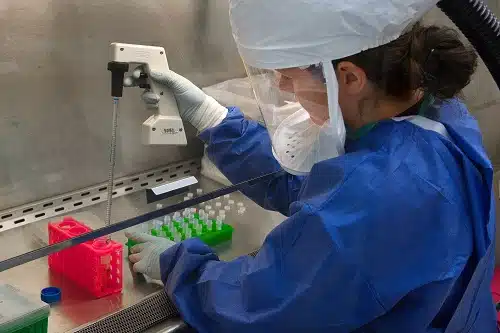Disease Surveillance In Public Health: The Importance of Disease Surveillance in Public Sector

Disease surveillance is the process of identifying, tracking, and investigating cases of specific diseases and how they affect the community at large. Local, state, and federal public health agencies work together to compile this information to increase public awareness about these diseases and how they spread. Private and public organizations can use this data to protect workers and residents from illness. In many cases, these diseases are preventable. Proper surveillance gives individuals and governments the tools they need to ward off infection.
What is Disease Surveillance in Public Health?
Disease surveillance is an ongoing process. It involves the systematic collection, analysis, and interpretation of public health data as it relates to specific diseases. Entered into public health software, this information is then used to implement public health policy with the goal of reducing infection rates. Governments track communicable diseases, including the highly infectious coronavirus and the flu, as well as incommunicable diseases like lead poisoning.
Data analysts will compile this information into reports that are shared with the rest of the government. The report includes detailed information about the disease, how it spreads, whom it is most likely to affect, and how infections can be prevented.
The Centers for Disease Control and Prevention (CDC) oversees disease surveillance for the entire country. The department uses the data it collects from various state and local health agencies to create a national framework for preventing disease and reducing the infection rate.
Why Disease Control and Prevention is Important
The government can’t stop diseases from spreading unless policymakers have an accurate idea of how and when they spread. Diseases have a significant impact on the way we live. They shape how we interact with one another, where we go, and the types of activities we enjoy. A single outbreak can overwhelm local healthcare systems while increasing the risk of illness and death.
Disease surveillance is ultimately about prevention. When a new virus or outbreak occurs, data analysts will begin tracking its spread using disease surveillance software to see how individuals get infected. If the disease is communicable, local officials may quarantine infected patients or close off the city to prevent the virus from spreading further. If the disease isn’t communicable, the government will warn residents about the dangers of certain products and materials that are known to cause disease. Every case contains valuable information about the disease that public health experts can use to prevent more cases from occurring.
How Public Health Departments Can Improve Disease Surveillance
Disease surveillance is a time-sensitive process. The government needs to act fast to contain the spread to minimize the number of people that get infected, and that requires having access to the latest case information in real-time.
Some state and local health departments may be slow to share this information with officials if the data has to be manually manipulated and uploaded into the database. Disease surveillance information is often scattered across a wide range of source materials, including electronic lab reporting, electronic health records, vital records solutions, and digital files that have been uploaded to the system. Instead of entering this information by hand, health departments can use digital software solutions to automatically collect disease-related information from a wide variety of sources. The program will quickly organize and analyze the information based on the CDC input guidelines and notify the user of any missing or incorrect fields. The user can then manipulate the data before uploading it to the government database.
Automated data collection expedites the reporting process and increases accuracy of it to keep public health organizations and leaders in the know during times of crisis. Furthermore, this automation facilitates forecasting, outbreak detection and response for optimum prevention and control of infectious diseases.
Public health relies on disease surveillance platforms for disease control and prevention. We are all healthier and happier because of it.